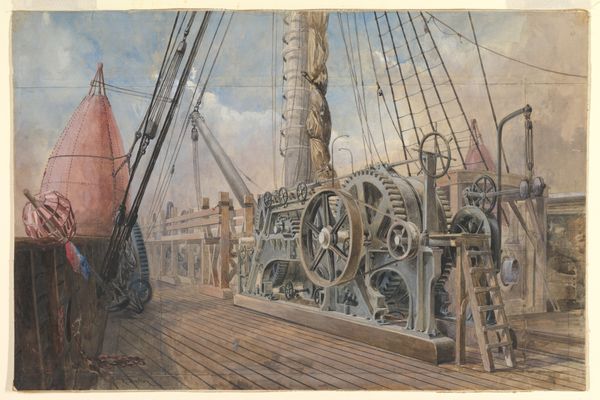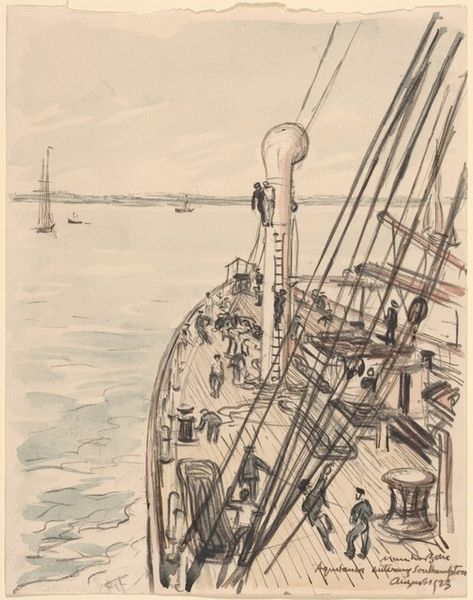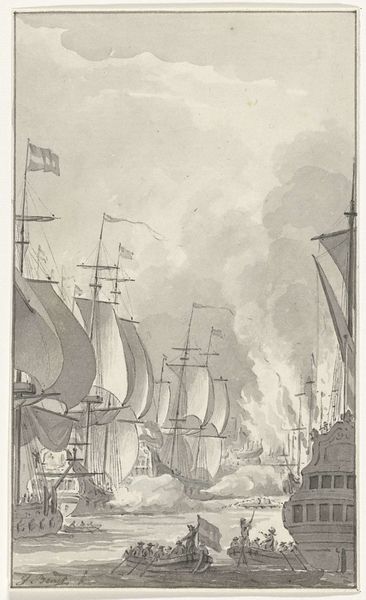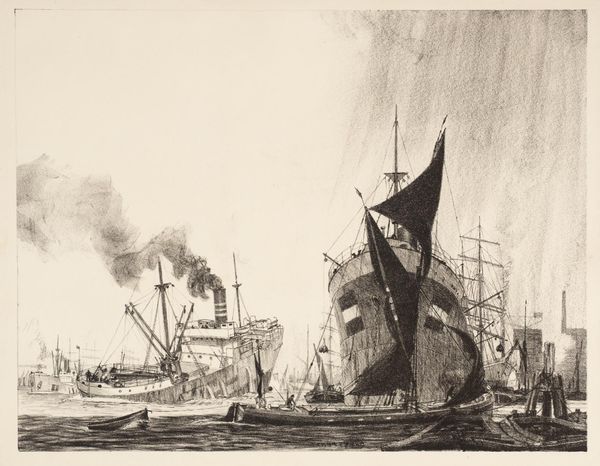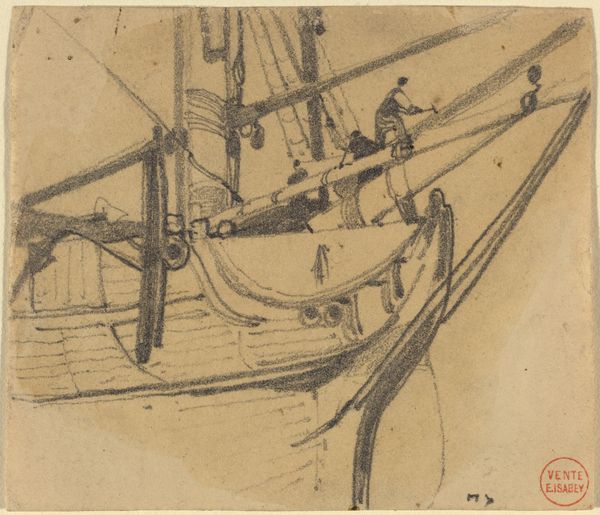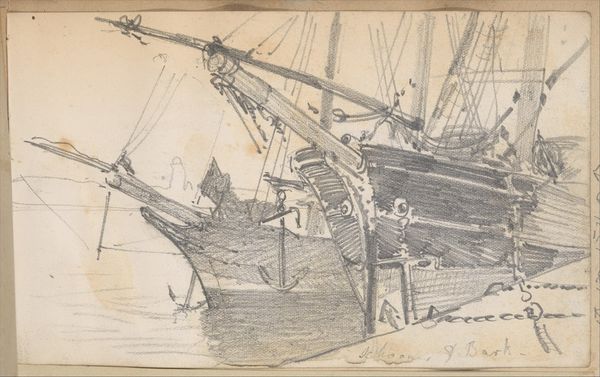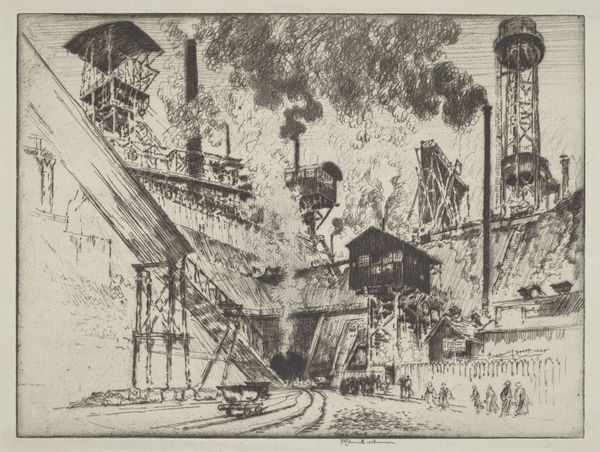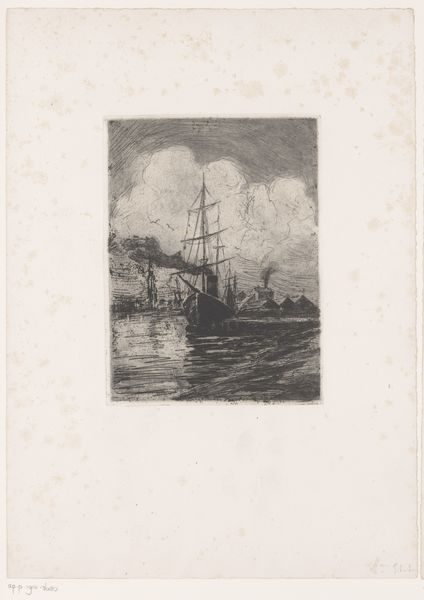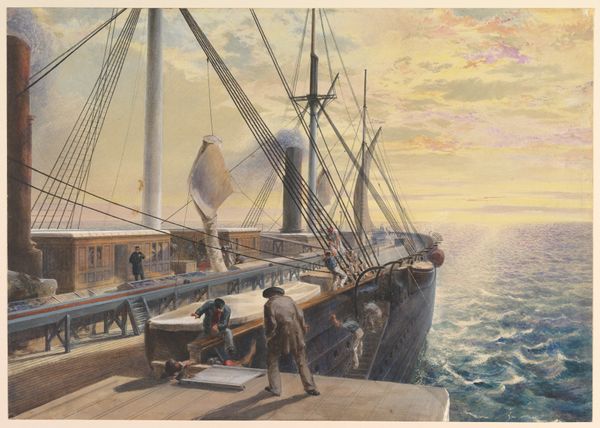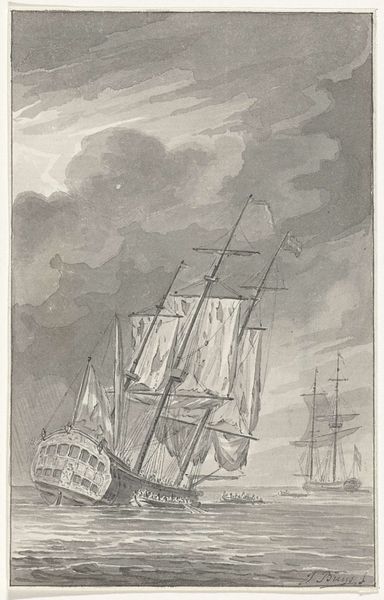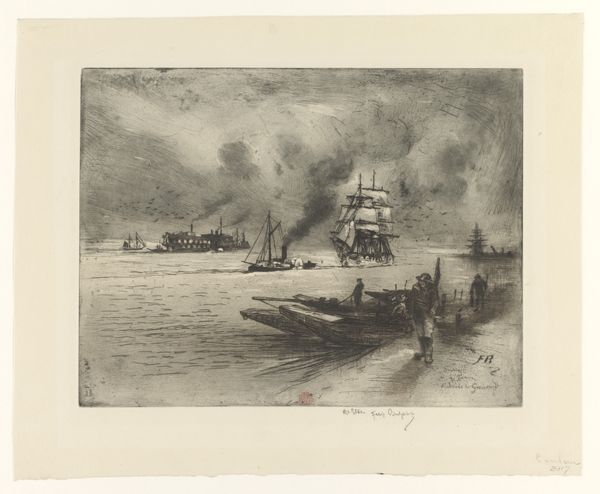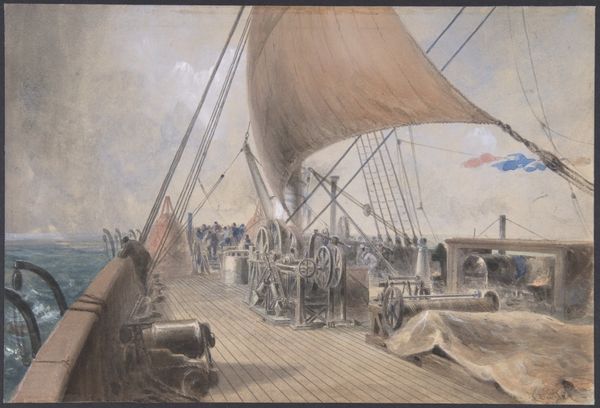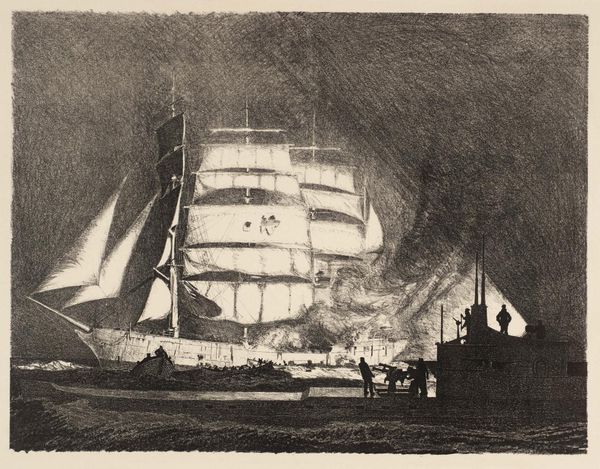![Frontispiece to "Eaux-fortes de Guérard, Collection de Mr. S. P. [Samuel Putnam] Avery, New York" by Henri-Charles Guérard](/_next/image?url=https%3A%2F%2Fd2w8kbdekdi1gv.cloudfront.net%2FeyJidWNrZXQiOiAiYXJ0ZXJhLWltYWdlcy1idWNrZXQiLCAia2V5IjogImFydHdvcmtzLzRhM2U4OTgzLWM4NTAtNGMyYy1hYjZlLWU0NDE4OGY3Y2RmMy80YTNlODk4My1jODUwLTRjMmMtYWI2ZS1lNDQxODhmN2NkZjNfZnVsbC5qcGciLCAiZWRpdHMiOiB7InJlc2l6ZSI6IHsid2lkdGgiOiAxOTIwLCAiaGVpZ2h0IjogMTkyMCwgImZpdCI6ICJpbnNpZGUifX19&w=3840&q=75)
Frontispiece to "Eaux-fortes de Guérard, Collection de Mr. S. P. [Samuel Putnam] Avery, New York" 1860 - 1897
0:00
0:00
drawing, print, pencil
#
drawing
# print
#
landscape
#
pencil drawing
#
pencil
Dimensions: Sheet: 17 3/8 x 11 15/16 in. (44.2 x 30.3 cm)
Copyright: Public Domain
Curator: Henri-Charles Guérard's "Frontispiece to 'Eaux-fortes de Guérard, Collection de Mr. S. P. [Samuel Putnam] Avery, New York,'" dating between 1860 and 1897, offers us a glimpse onto the deck of a ship rendered in pencil. What stands out to you? Editor: The first thing that grabs me is the stillness juxtaposed against what is clearly a scene of transit. A dog is sleeping peacefully near a "fragile" crate, with a cat perched alertly atop it. The two animals really change the mood of what would have seemed like a mechanical composition. Curator: The depiction of animals is fascinating. The contrast between the inert dog and observant cat certainly infuses an element of quiet observation into the maritime setting, prompting questions about human experience, industrial labor, and perhaps even the ethics of global movement during the late 19th century. Editor: It makes me wonder if these animals are symbolic; if they were familiar characters or muses that Guerard put into all his work? Cats were a frequent element of Art Deco. Curator: As a frontispiece, this piece likely aims to encapsulate themes central to Guérard’s collection for Samuel Putnam Avery. The crate labelled "fragile", prominently displayed alongside a cat and a dog, invites speculation around notions of worth, vulnerability, and value associated with cultural goods during a period of massive transatlantic exchange and commerce. Editor: Right! And looking at the rest of the imagery on the ship, smoke rising, and thick cables gives the feel of both adventure and hardship; both real states of immigration. Curator: Yes, situated in the Metropolitan Museum of Art, this print gains added layers of complexity by echoing and mirroring institutional collecting practices. Do these artifacts retain meanings given to them by people and context from that time, or are the collection's significations subject to institutional interpretation? Editor: Looking at the scene, its muted tones enhance that quietude I first mentioned; even the ship's funnel isn’t bellowing wildly, but exudes gentle trails of smoke. Curator: A wonderful reading. It is precisely within these subtleties—the seemingly still scene imbued with silent energies—that one can unlock insights into prevailing social attitudes in late 19th-century trade relations. Editor: And, really the ways artists and collectors influence those ideas, too!
Comments
No comments
Be the first to comment and join the conversation on the ultimate creative platform.
